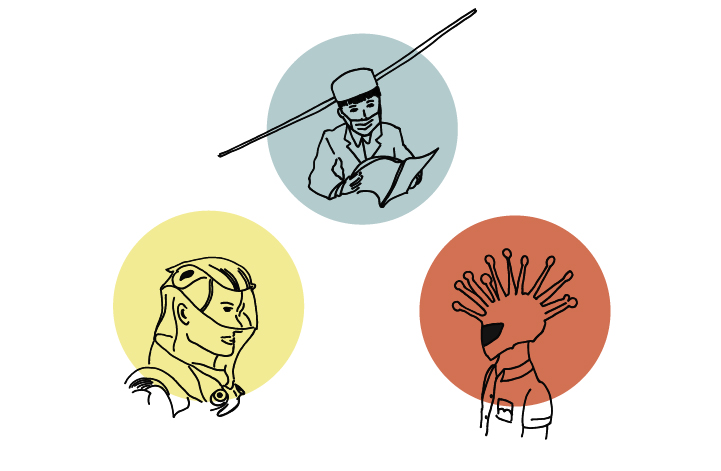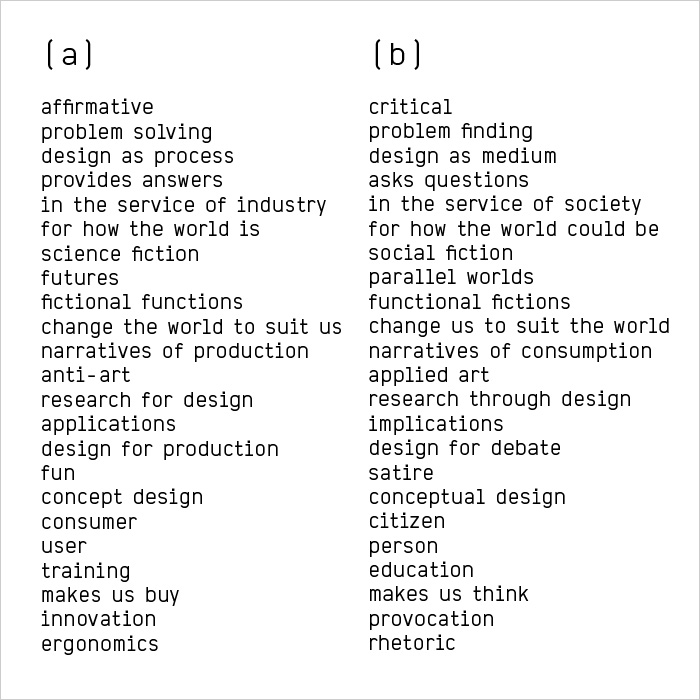
Speculative Design | Fiona Raby & Anthony Dunne
‘Speculative Design’ is the term used to describe experiments and designs that make statements about the present on the basis of creative futurology. The term was coined by the British designers and professors Anthony Dunne and Fiona Raby in the 1990s at the Royal College of Art in London. Originally, they called their approach ‘Critical Design’ - hence sketching the future serves to question the status quo. The main goal that accompanies Speculative Design is to imagine the future of our society and research which technological answers are needed.
The decisive factor is to provide thought-provoking impulses. Dunne and Raby do not intend to offer solutions that could be implemented immediately, but instead to vividly address the challenges of the contemporary world.
Many speculative design solutions are intended to provoke - also on a political level. By finding possible answers to today's individual challenges and those of living together, new perspectives on the problems themselves are also created. As a starting point of their theory for Speculative Design, Dunne and Raby created a list entitled A/B, a manifesto for their practice, in which they compared design as commonly understood (A) to their practice (B), not as a replacement, but to add another dimension.

A/B, Dunne & Raby
Dunne and Raby’s practice is constantly framing Speculative Design as experiments in a laboratory which tackle possible ways to deal with them differently. Their designs are connected to industry reflecting on the practical side of design while doing projects with external partners, such as scenarios about dematerialised money and its effects on society.
Dunne & Raby always link researchers with design schools and companies to ask alternative questions and revisit problems in today’s situations.
Further reading:
→ Dunne, Anthony, Raby, Fiona. Speculative Everything. MIT Press, 2014
→ Dunne & Raby Studio